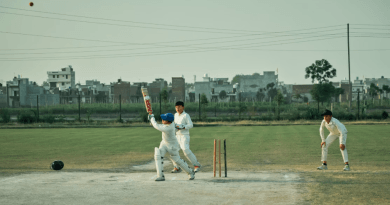Legacy of Champions: Do Sports Dynasties Come from DNA or a Training Gene?
He watches a new prodigy step onto the court and the commentary instantly reaches for genealogy: “son of,” “daughter of,” “from the famous clan.” The idea seems clear-cut — talent runs in the blood. Yet just as chasing a lucky streak on the red door roulette demands more than blind fortune, athletic mastery springs from daily grind, unwavering focus and the support systems families forge around training and ambition. The truth sits somewhere between biology and culture, tangled like muscle fibers after a long workout.
What Families Really Hand Down
Researchers keep arguing about heritability while coaches quietly notice the routines kids absorb at home. Genetics does set certain parameters: limb length, fast‑twitch ratios, VO₂ max ceilings. But families also transfer habits, expectations and a lived model of how to suffer productively. In kitchens, cars and backyard nets, young athletes learn how to bounce back from losses, schedule rest, manage nerves. That “training gene” — not a literal helix, but a household script — often proves just as decisive.
Signals That Favor Nature or Nurture
- Tall parents tend to produce tall offspring, and height matters in basketball and volleyball.
- Siblings raised in the same drill‑heavy environment frequently reach comparable levels, even without standout physiques.
- Late bloomers with modest genetics can leap forward when a coach finally matches method to mindset.
- Injuries cluster in families that ignore recovery routines, hinting that culture can sabotage good DNA.
Rituals, Resources and Role Models
Inside a dynasty’s home, training is rarely optional. Schedules stick to the fridge. Weekend trips orbit tournaments. Recovery protocols sit beside cereal boxes. More importantly, kids see failure reframed as feedback. When a parent breaks down last night’s match film, the child learns analysis over self‑pity. When early mornings are normal, discipline stops feeling like punishment and starts reading as identity.
The Psychology of Being “Next”
Carrying a famous surname cuts two ways. On one hand, access explodes: better coaching, insider networks, a phone call returned. On the other, the shadow looms. He or she is compared, ranked, doubted — “riding coattails” becomes a taunt. Navigating that pressure requires emotional coaching as much as sprint drills. Some thrive on the chip; others fold at the first dip in form. Families that talk openly about pressure, not just performance, tend to keep the next generation sane.
Four Levers That Shape a Dynasty’s Future
- Structured Freedom — Kids choose their sport within boundaries, keeping intrinsic motivation alive.
- Deliberate Rest — Scheduled recovery prevents burnout and chronic injury.
- Skill Diversification — Cross‑training widens athletic IQ and reduces overuse strain.
- Narrative Control — Parents and mentors help craft a personal storyline that isn’t just “the sequel.”
Data, Myth and Media
Modern analytics complicate the folklore. Wearables quantify workload, genetic tests tease predispositions, and scouts use machine learning to spot patterns. Yet highlight reels still sell the myth of destiny. Media loves a dynasty because it packages sport into family sagas — Shakespeare with shin guards. That narrative pressure can distort reality, convincing fans (and sometimes athletes) that DNA guarantees outcome. Coaches know better: a gifted mover who never learns to love repetition will stall; a grinder with average numbers can outlast a phenom who expected shortcuts.
When Dynasties Fail to Replicate
Plenty of legends produce children who try a different lane or skip sport entirely. That isn’t failure; it is evidence that talent is not a conveyor belt. Opportunity can feel like obligation. Some families consciously loosen the screws, encouraging art, science or business. Ironically, that freedom can later pull the kid back to athletics with fresh hunger — their choice, not a legacy assignment.
Beyond the Household: Systems Matter
Clubs, schools and national programs either amplify or mute familial advantages. A country with robust youth leagues gives a motivated teen a ladder to climb. A broken system forces even a talented child into dead ends. Thus, what looks like “genetic inevitability” is often infrastructure doing quiet work in the background.
So, DNA or Drillbook?
If he had to bet, he would split the pot. Biology lays a foundation: leverage, lung capacity, coordination potential. Culture pours the concrete: repetition, resilience, tactical IQ. Remove either and the structure tilts. Keep both aligned and a dynasty can run across generations — not because talent is cloned, but because a family keeps rewriting and teaching the same high‑performance script.
Conclusion
Sports dynasties are less about destiny and more about design. Genes give possibilities; routines convert them into results. Inside champion households, talent is treated like raw ore — valuable, yes, but useless without heat and pressure. The question “nature or nurture” misses the point. The legacy that truly passes on is a way of living with competition: how to practice when nobody watches, how to lose without crumbling, how to chase improvement when the surname already glitters. That is the real inheritance — and it is one any athlete can adopt, famous bloodline or not.










